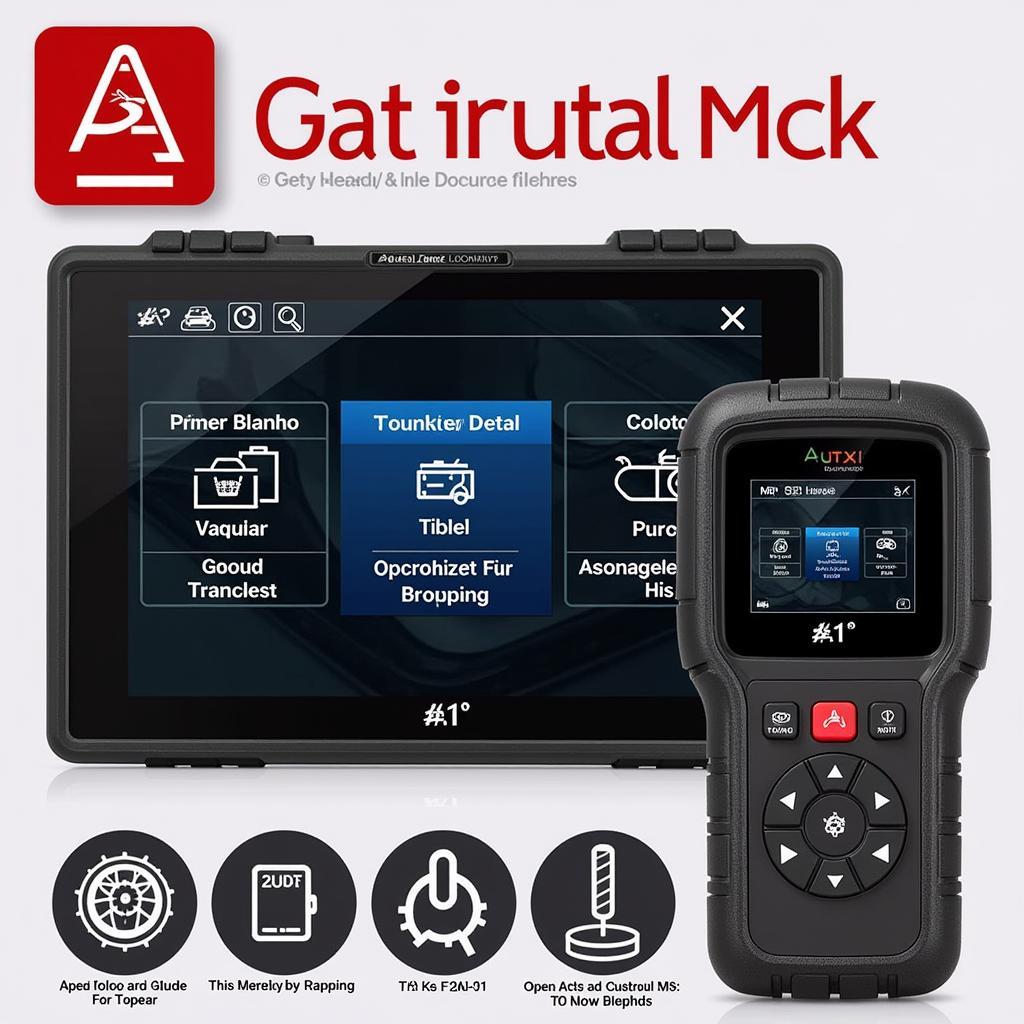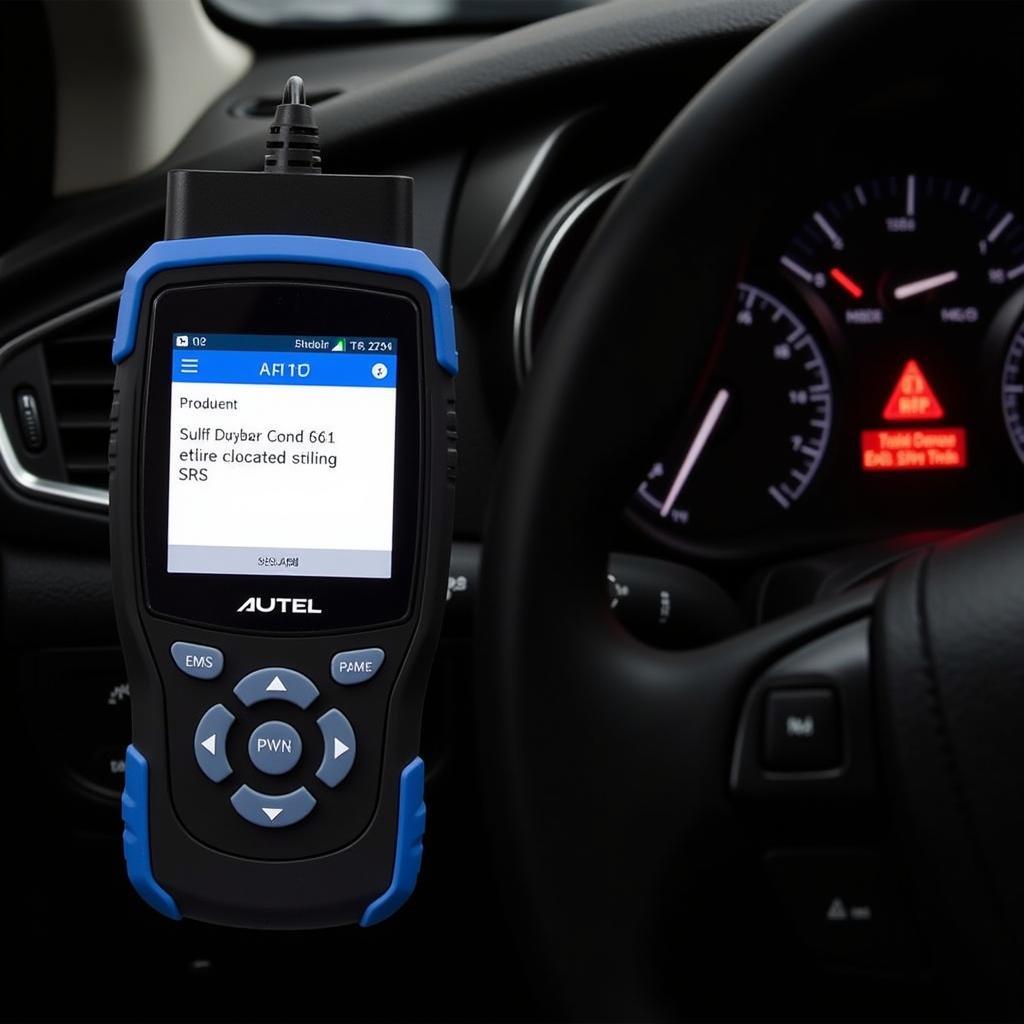Have you ever wondered why your TPMS light comes on, even though your tires seem fine? It’s a common problem, and it might be due to the TPMS (Tire Pressure Monitoring System) threshold setting. Many car owners find themselves asking, “How do I change the Autel TPMS threshold?” In this comprehensive guide, we’ll delve into the intricacies of Autel TPMS threshold change, providing you with the knowledge and tools you need to keep your tires properly inflated and ensure a safe driving experience.
Understanding TPMS Threshold Change
TPMS is a vital safety feature that alerts you to tire pressure discrepancies. It helps to prevent accidents caused by under-inflated or over-inflated tires. The TPMS threshold is the pre-set pressure value that triggers the warning light. The TPMS threshold change allows you to adjust this value.
The Importance of TPMS Threshold Change
From a technical perspective:
The TPMS threshold is typically set at the factory based on the vehicle’s specifications. However, various factors, such as tire wear, climate changes, and even the addition of aftermarket tires, can affect optimal tire pressure. The ability to adjust the TPMS threshold allows you to align the system with your specific driving conditions, ensuring a more accurate and reliable performance.
From a practical standpoint:
Imagine driving on a hot summer day, where the tire pressure naturally increases. The TPMS threshold may be set too low, causing the warning light to come on unnecessarily. This can be frustrating and lead to unnecessary anxiety. By adjusting the TPMS threshold, you can eliminate false alarms and ensure a more comfortable driving experience.
From a safety perspective:
The TPMS threshold change helps you maintain the optimal tire pressure for your vehicle, which is crucial for maximizing fuel efficiency, improving handling, and minimizing wear and tear on your tires. Under-inflated tires can lead to poor fuel economy, uneven tire wear, and increased risk of tire failure.
How to Change the Autel TPMS Threshold
Changing the Autel TPMS threshold is a relatively straightforward process. Here’s a step-by-step guide:
- Connect your Autel TPMS tool to your vehicle: This step typically involves plugging the tool into the OBD-II port, which is usually located under the dashboard.
- Select the TPMS function on your tool: Most Autel TPMS tools have a dedicated menu for TPMS settings. Navigate to the TPMS function using the tool’s interface.
- Choose the TPMS threshold setting: You’ll see the current TPMS threshold displayed on the tool’s screen. Enter the desired TPMS threshold value.
- Confirm your changes: Double-check the entered value and confirm the changes to save the new TPMS threshold setting.
- Test the TPMS system: After changing the TPMS threshold, it’s essential to test the system to ensure the new setting is working correctly. You can do this by driving the vehicle for a short distance and verifying that the TPMS warning light behaves as expected.
Pro tip: While the Autel TPMS tool provides a user-friendly interface, it’s essential to refer to the tool’s manual or consult with a qualified automotive technician for detailed instructions and specific recommendations for your vehicle.
Common Questions About Autel TPMS Threshold Change
“What if my Autel TPMS tool doesn’t have a TPMS threshold setting?”
Some Autel TPMS tools may not offer the functionality to change the TPMS threshold. In such cases, you may need to rely on other methods, such as contacting your vehicle manufacturer or visiting a qualified automotive technician.
“What is the ideal TPMS threshold for my vehicle?”
The ideal TPMS threshold varies depending on the vehicle model, tire type, and driving conditions. Refer to your vehicle’s owner’s manual for recommended tire pressure and consult with a qualified automotive technician for a tailored recommendation.
“Can I change the TPMS threshold for individual tires?”
Most Autel TPMS tools allow you to adjust the threshold for individual tires. This is particularly helpful for vehicles with mixed-size tires or where specific tires require different pressure settings.
Feng Shui and TPMS Threshold Change
While Feng Shui focuses on creating harmony in your environment, it doesn’t directly relate to TPMS threshold settings. However, you can approach this process with mindfulness and intention. Remember to be aware of your vehicle’s needs and make adjustments that promote safety and efficiency, creating a harmonious relationship between you and your vehicle.
Conclusion
Autel TPMS threshold change empowers you to fine-tune your TPMS system for optimal performance. By understanding the importance of this feature and following the steps outlined in this guide, you can ensure the accuracy and reliability of your TPMS, promoting a safe and comfortable driving experience.
Remember to always consult your vehicle’s owner’s manual and seek guidance from a qualified automotive technician for any specific questions or concerns. If you have any questions or need assistance with your Autel TPMS tool, feel free to reach out to our team of automotive experts at Whatsapp: +84767531508. We are available 24/7 to provide support and guidance.
Stay safe, and happy driving!
[shortcode-1]autel-tpms-tool|Autel TPMS Tool|A digital illustration of an Autel TPMS tool being used to adjust the TPMS threshold setting on a car. The illustration should show the tool connected to the car’s OBD-II port and display a user interface with the TPMS threshold setting prominently displayed.
[shortcode-2]tpms-threshold|TPMS Threshold Setting|A photorealistic image of a car’s dashboard with the TPMS warning light illuminated. The image should capture the detail of the dashboard and the warning light, with a focus on the visual impact of the warning light.
[shortcode-3]car-tires|Car Tires|A close-up image of four car tires, with all of them properly inflated and showing the correct tire pressure. The image should focus on the details of the tires and the tire pressure gauges, emphasizing the importance of maintaining optimal tire pressure.


